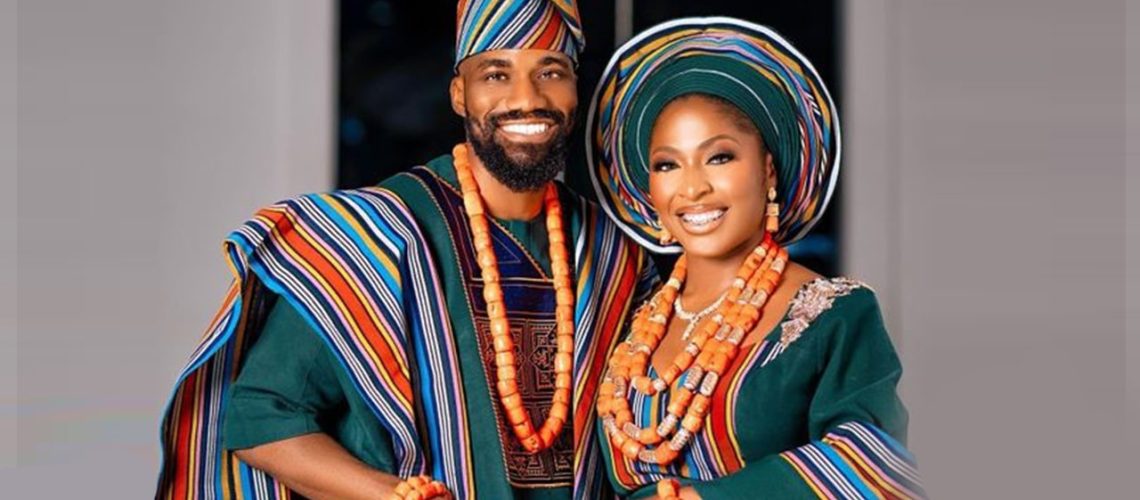Aso Oke, a hand-woven cloth of intricate patterns and vibrant colors, is a revered artifact among the Yoruba people, symbolizing the rich heritage and tradition celebrated through traditional attire for various occasions.
Aso-oke is a peculiar artifact among the Yoruba people. For centuries, the Yoruba people of Nigeria and in the Diaspora have celebrated their rich culture through their traditional attire, with Aso Oke being one of their most iconic and revered fabrics. Aso Oke is a hand-woven cloth made from cotton and silk, with intricate patterns and vibrant colors that reflect the vibrancy and elegance of Yoruba culture. In Nigeria, Aso Oke is worn for a variety of occasions, from weddings and funerals to birthdays and cultural festivals.
The use of Aso Oke in Nigerian parties is not just a display of fashion but a symbol of heritage and tradition. It is a way for Nigerians and people of African descent dispersed across the world to connect with their roots and showcase their culture to the world.
Essentially, the art of weaving Aso Oke is a skill that has been passed down through generations of Yoruba weavers, who use handlooms to create the intricate patterns that make the cloth unique. Each Aso Oke fabric has a story to tell, with patterns and colors representing different events and moments in Yoruba history.
Before colonial contact, weaving flourished in central and northern Yorubaland, especially in Owo, Ede, Ibadan, Ondo, Oyo, Ogbomoso, Ado- Ekiti and Iseyin towns. Before contact with ‘western culture’, the traditional Nigerian communities had developed indigenous technology and ecological conditions of ingenuity. The raw materials for traditional weaving were largely obtained from the local environment. Communities such as Ilorin, Iseyin, Oyo, Okenne, Kano, Nupe, Kabba, Abeokuta, Ijebu-Ode, and some other parts of Igboland were famous for the quality of their textile products, which were able to satisfy both domestic and foreign demands.
In Yoruba culture, Aso Oke is worn by both men and women, with different styles and designs for each gender. For men, Aso Oke is typically worn as a cap or as a wrapper, while women wear it as a headscarf or as a wraparound skirt. The fabric is also used to create other traditional Yoruba attire, such as Buba and Iro, which are blouses and wrappers worn by women, and Agbada, a flowing gown worn by men.
Similarly, one of the most common occasions for wearing Aso Oke at Nigerian parties is at weddings. In Yoruba culture, weddings are grand celebrations that involve a series of traditional ceremonies, including the engagement ceremony, the introduction ceremony, and the wedding ceremony. At each of these events, the bride and groom, as well as their families and guests, wear Aso Oke as a symbol of the occasion.
More so, at Nigerian weddings, Aso Oke is not just worn by the bride and groom but by everyone in attendance. Each guest wears a different color and pattern of Aso Oke, depending on their relationship with the bride and groom. For example, the bride’s family might wear a different color and pattern than the groom’s family, while the friends of the couple might wear a different color and pattern altogether.
In addition to weddings, Aso Oke is also worn at other traditional Yoruba events, such as naming ceremonies, funerals, and cultural festivals. At these events, Aso Oke is used to creating a sense of unity and community, with everyone wearing the same fabric as a sign of their shared heritage and culture.
As Nigerian culture has evolved, so has the use of Aso Oke. Today, Aso Oke is not just worn at traditional Yoruba events but also at modern parties and events, such as birthdays and graduations. The fabric has become a symbol of Nigerian identity, with young Nigerians using it to connect with their heritage and showcase their culture to the world.
Nevertheless, in recent years, Aso Oke has also gained international recognition, with designers and fashion houses around the world incorporating the fabric into their collections. The rich history and cultural significance of Aso Oke have made it a popular choice among designers and fashion lovers alike, who appreciate its unique beauty and elegance.
In conclusion, Aso Oke is not just a fabric, but a symbol of Nigerian culture and heritage in Africa and to people of African descent the world over. It’s intricate patterns and vibrant colors reflect the beauty and elegance of Yoruba culture, and its use in Nigerian parties and events serves as a reminder of the importance of tradition and community.


